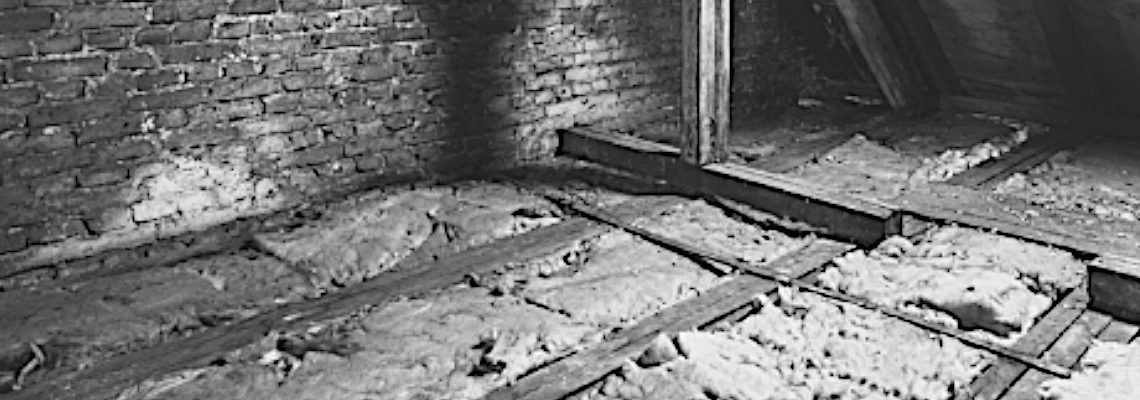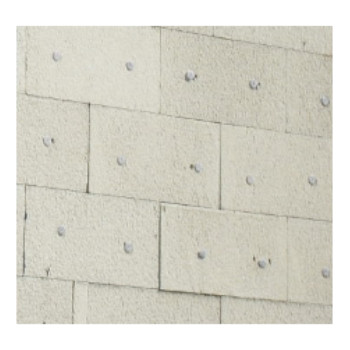
WHICH INSULATION HOLDS THE BETTER R-VALUE OVER TIME?*
The choice of thermal insulation is one thing, its installation is another. Once installed, thermal insulation should theoretically be forgotten for many years and maintain its parameters. However, this is not always the case.
In this article, we will delve into this issue. We will clarify certain aspects you should consider when choosing insulation. The most important parameter determining the effectiveness of insulation over the years is indeed the R-value, and it is this value that we will examine for various insulation products.
WHAT IS THE INSULATION R-VALUE?
In general, the R-value tells us how well a particular insulation retains heat and prevents its escape to the other side of the insulation material. The thicker the insulation material, the greater its thermal resistance, hence its R-value is higher. Therefore, the higher the R-value coefficient, the better the insulation material. The R-value is determined by factors such as insulation thickness and its thermal conductivity. For more info regarding r-value click here.
IMPORTANCE OF INSULATION R-VALUE
The importance of the insulation coefficient known as R-value has been underscored by all those who, just 10 years after installation, had to replace their insulation. Why does this happen? Well, as commonly understood, the R-value is determined by factors such as insulation thickness and its thermal conductivity. If either of these factors changes, the R-value also changes. It's never the case that the R-value can increase; on the contrary, it decreases.
When the thickness of insulation decreases, the cross-sectional area that previously provided resistance to cold also diminishes. Therefore, insulation whose thickness changes for any reason over the years of use will see a decrease in its R-value, thus reducing its insulation effectiveness, and in exceptional cases, dropping to zero.
Reductions in insulation thickness (and thus the R-value parameter) can result from factors like direct exposure to sunlight, roof leaks, and excessive moisture.
Thermal conductivity (lambda value) is the second coefficient determining the R-value. It represents the material's ability to transfer energy through conduction.
From a mathematical standpoint, the lambda value represents the rate at which energy is transmitted through 1 square metre of material, 1 metre thick, with a temperature difference of 10°C between both sides.
Thermal conductivity of insulation material should not change, which isn't entirely true. When thermal insulation or its layer is damaged for any reason, its insulation effectiveness decreases, meaning more heat penetrates to the other side of the insulation.
The less heat thermal insulation allows to pass through, the better its thermal conductivity. Therefore, the smaller the number, the better the insulation properties.
Here are thermal conductivity values for various conventional insulation materials, ranked from highest (worse) to lowest (better):
- Straw - 0.08 W/mK
- Expanded polystyrene - 0.030-0.045 W/mK
- Mineral or glass wool - 0.032-0.044 W/mK
- Wood fiber - 0.038 W/mK
- Hemp - 0.038 W/mK
- Cellulose fiber - 0.04 W/mK
- Cork - 0.04 W/mK
- Sheep wool - 0.036 W/mK
- PIR (polyisocyanurate foam) - 0.022 W/mK
- Phenolic foam - 0.018 W/mK
- Aerogel - 0.012-0.016 W/mK
If the thermal conductivity of thermal insulation changes, it's because something has messed with how its parts are put together. This only happens when the insulation is exposed directly to sunlight, water, or fire. Mineral wool, for instance, tends to retain moisture after contact with water, leading to a decrease in its R-value, while polystyrene left in the sun can deteriorate.
EPS R-VALUE OVER TIME
Expanded Polystyrene (EPS) has an R-value that fluctuates depending on the manufacturer, typically ranging from 0.030 to 0.045 W/mK. EPS and its thickness can undergo changes when exposed to higher temperatures, starting from around 60 degrees Celsius, or direct sunlight. Therefore, it's not recommended to insulate hot water pipes with EPS, as its thickness may change under heat, thereby reducing its R-value. It's also not advisable to install electrical wires in EPS, as the heat they generate can damage the polystyrene.
EPS is particularly unsuitable for insulating walls of bakeries or pizza ovens. Perhaps the worst enemy of EPS is sunlight, which can first change its colour to yellow, making it very brittle and dry, causing it to detach from the wind and change its thickness, thus affecting its R-value. Perhaps, you have seen EPS left exposed on the external walls of buildings without a final render, and observe what happens to it over the years. Plastic dowels, for instance, which were originally embedded in the EPS during installation, can be found on its surface after years.

EPS insulation over time
XPS R-VALUE OVER TIME
Extruded polystyrene (XPS) typically has a Thermal Conductivity of 0.033 W/mK, making it a mid-range insulation product compared to, for instance, PIR boards (0.022). XPS boards, which are officially called Extruded PolyStyrene, have a higher density, often three to four times greater than PIR boards. They are commonly installed beneath screed on floors, shielding them from factors like sunlight exposure, leaks, and moisture that could affect insulation thickness and thus the R-value parameter.
So, to sum up, it's highly unlikely that the R-value of XPS boards would change significantly over time, given their durability and resistance to environmental factors in the conditions they're typically used in.
MINERAL WOOL R-VALUE OVER TIME
Mineral wool is divided into glass wool and rock wool, and the choice between them influences whether their R-value will change over time.
Glass wool tends to settle and change its volume over the years due to high humidity or soaking. Once soaked, it never fully dries, directly impacting a decrease in its R-value.
On the other hand, rock wool, unlike glass wool, dries out after being soaked, although it takes a considerable amount of time. Hence, it could be argued that its R-value remains unchanged.
Compact or compressing wool during installation, whether glass or rock, always results in a reduction of its R-value. Therefore, it's essential to lay it loosely to maintain its elasticity. Often, wool gets compressed under objects placed on it. As a result, over time, the compressed wool loses its good R-value coefficient, lowering its thermal insulation ability.
PIR R-VALUE OVER TIME
PIR boards are robust panels made from Polyisocyanurate. Regardless of the brand, whether it's Celotex, Unilin, or Recticel, they are coated with aluminum foil on both sides to protect them from sunlight and moisture. However, their exposed cut edges can determine whether their R-value remains consistent over time.
Leaving PIR boards exposed to direct sunlight can deteriorate their edges, making them brittle and prone to wind erosion. Therefore, if you install PIR boards indoors, their R-value should remain unchanged. However, using PIR boards to fill cavity walls outdoors may lead to a loss of their insulation properties if not laid carefully, reducing their R-value over time. If their edges remain exposed, there's a high chance they'll get soaked. Imagine the consequences of undergoing 1000 cycles of soaking and drying. It's not hard to visualise the outcome. The edges of such panels will crumble and degrade, and these changes will progress inward, destroying their properties.
In the case of installing PIR boards under a screen, their R-value will remain constant, just like with ceiling insulation or interior wall insulation. Perhaps this is why PIR boards, being relatively inexpensive and versatile, have gained remarkable popularity in the UK.
PHENOLIC BOARDS R-VALUE OVER TIME
Phenolic boards, like solid PIR boards, are rigid panels filled with phenolic foam, and their thermal conductivity of 0.018 W/mK makes them the best insulation materials on the UK market. Whether their R-value changes over time depends on whether they are exposed to water or sunlight and the conditions of their installation.
Similarly, spray foam, such as that used for sealing windows, when left exposed to sunlight over time, may decrease in volume, reducing its R-value. However, if phenolic boards are not directly exposed to sunlight, they should not lose their good insulation properties and, consequently, their high R-value.
DOES OLD INSULATION LOSE R-VALUE OVER TIME?
The answer to whether old insulation loses R-value over time depends on factors such as the insulation's material, and exposure to environmental conditions. Generally speaking closed-cell insulation that hasn't been directly exposed to sunlight may retain its original R-value over time. On the other hand, loose-fill insulation that has been subjected to moisture may indeed lose its initial R-value. Examples of insulation materials that should not lose R-value over time are PIR and XPS, which are closed-cell materials. On the other hand, examples of materials that will be most susceptible to a decrease in R-value are mineral wool and expanded polystyrene, which are open-cell materials.
WHICH INSULATION HOLDS THE BETTER R VALUE OVER TIME?
The durability of insulation materials and their ability to maintain R-value over time largely depend on their resistance to water infiltration. Closed-cell insulation products, like PIR (polyisocyanurate) and XPS (extruded polystyrene), excel in this aspect.
For instance, PIR insulation consists mainly of closed air or gas bubbles, restricting heat transfer through convection. This closed-cell structure ensures consistent high insulation efficiency and thermal properties. These boards are rigid and resistant to water, maintaining their dimensions and R-value over the years.
Similarly, XPS insulation features a closed-cell structure that prevents water intrusion, ensuring its longevity and stable R-value.
Related articles:
THE BIGGER THE R, THE SMOOTHER THE RIDE!
WHAT TO CONSIDER WHEN CHOOSING INSULATION MATERIALS
WHAT CAN GO WRONG WITH INSULATION? COMMON ISSUES AND SOLUTIONS
*Insulationgo LTD strives to keep the content accurate and up-to-date, but we cannot be held responsible for any mistakes or exclusions.
The information in this blog isn't expert advice and shouldn't replace talking to the right specialists. Before buying or deciding anything based on this info, it's best to contact the product manufacturer directly to double-check if it's right for what you need.
Descriptions, drawings, photographs, data, proportions, weights, and measured values provided here may change without prior notice and do not establish the guaranteed contractual quality of the products. The recipient of these products holds the responsibility to comply with proprietary rights, existing laws, and legislation.
Using this blog implies acknowledgment and agreement that Insulationgo LTD cannot be held accountable for any damages, losses, or inconveniences resulting from the use or reliance upon the information provided. This limitation of liability extends to all users of the blog, including visitors, readers, and subscribers.










































































































